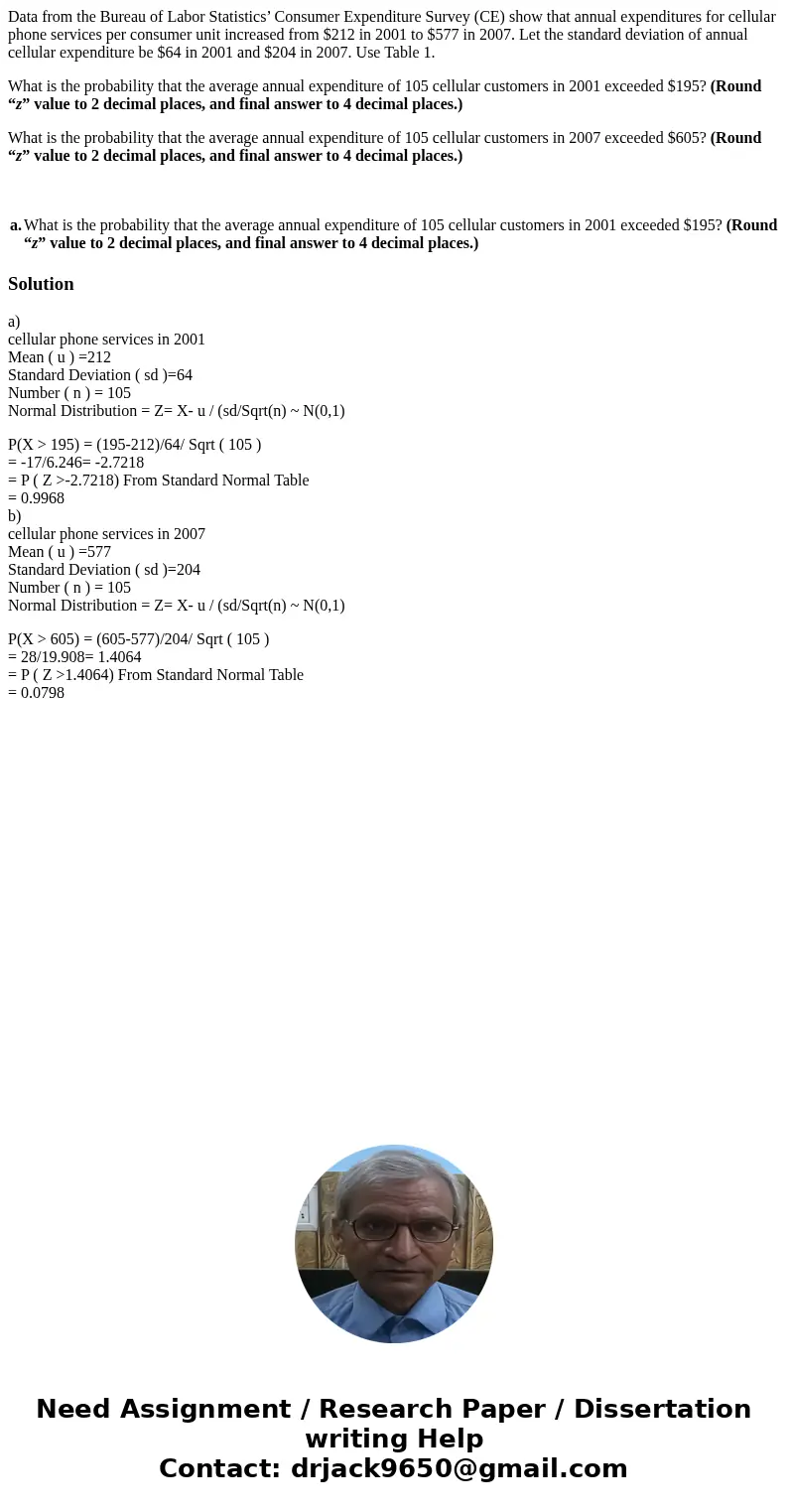Data from the Bureau of Labor Statistics Consumer Expenditur
Data from the Bureau of Labor Statistics’ Consumer Expenditure Survey (CE) show that annual expenditures for cellular phone services per consumer unit increased from $212 in 2001 to $577 in 2007. Let the standard deviation of annual cellular expenditure be $64 in 2001 and $204 in 2007. Use Table 1.
What is the probability that the average annual expenditure of 105 cellular customers in 2001 exceeded $195? (Round “z” value to 2 decimal places, and final answer to 4 decimal places.)
What is the probability that the average annual expenditure of 105 cellular customers in 2007 exceeded $605? (Round “z” value to 2 decimal places, and final answer to 4 decimal places.)
| a. | What is the probability that the average annual expenditure of 105 cellular customers in 2001 exceeded $195? (Round “z” value to 2 decimal places, and final answer to 4 decimal places.) |
Solution
a)
cellular phone services in 2001
Mean ( u ) =212
Standard Deviation ( sd )=64
Number ( n ) = 105
Normal Distribution = Z= X- u / (sd/Sqrt(n) ~ N(0,1)
P(X > 195) = (195-212)/64/ Sqrt ( 105 )
= -17/6.246= -2.7218
= P ( Z >-2.7218) From Standard Normal Table
= 0.9968
b)
cellular phone services in 2007
Mean ( u ) =577
Standard Deviation ( sd )=204
Number ( n ) = 105
Normal Distribution = Z= X- u / (sd/Sqrt(n) ~ N(0,1)
P(X > 605) = (605-577)/204/ Sqrt ( 105 )
= 28/19.908= 1.4064
= P ( Z >1.4064) From Standard Normal Table
= 0.0798

 Homework Sourse
Homework Sourse